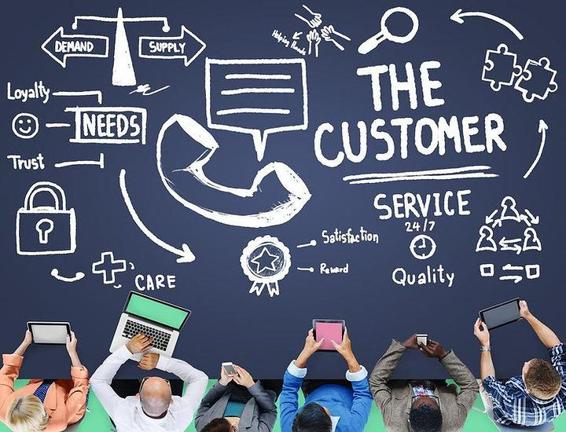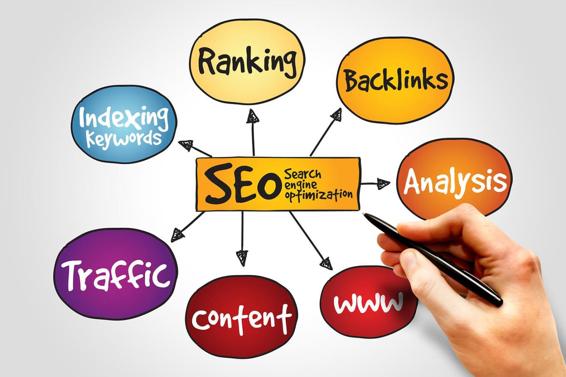
The Rollercoaster Ride of Entrepreneurship
By: Keith Orlean
TABLE OF CONTENTS
Foreword: Embracing Technology in the Pursuit of Entrepreneurial Success ______________________ 2
Chapter 1 - An Entrepreneur Grows in Brooklyn ____________________________________________ 3
Chapter 2: The Perils of Fear and Impatience: Lessons on the Road to Entrepreneurship ___________ 5
Chapter 3 - The Thrill of the Sale: Why Sales and Marketing are at the Heart of Every Business ______ 7
Chapter 4 - Born or Made? The Role of Nature and Nurture in Developing Leadership Skills _________ 9
Chapter 5 - The Art of Selling __________________________________________________________ 11
Chapter 6 - From Idea to Success: Overcoming the Challenges of Starting Your Own Business ______ 12
Chapter 7 - Navigating the Financial Terrain: Dos and Don'ts of Financing a Business _____________ 15
Chapter 8 - From NO to YES: How a Positive Attitude Can Turn Rejection into Reward _____________ 17
Chapter 9 - From Obstacles to Opportunities: The Power of Mentorship _______________________ 19
Chapter 10 - Lost Opportunities: Understanding Why Salespeople Fail to Close the Deal __________ 21
Chapter 11 - Sell Yourself, Sell Anything: My Fundamental Approach for Sales Success ____________ 22
Chapter 12 - Authenticity: The Key Ingredient for Building Long-Term Relationships in Business ____ 24
Chapter 13 - Networking: The Key to Unlocking Sales Success ________________________________ 25
Chapter 14 - Building a Customer Base in the Digital Era: What You Need to Know _______________ 27
Chapter 15 - Relationship-First Approach to Business Development: Why It Matters ______________ 29
Chapter 16 - Sales & Marketing in a Digital World __________________________________________ 31
Chapter 17 - How Technology Revolutionized My Sales and Marketing Strategies ________________ 33
Chapter 18 - Technology Transformation: A Sales and Marketing Journey through Innovation ______ 35
Chapter 19 - SEO Unleashed: How Search Engines Reshaped Business Location Strategies _________ 38
Chapter 20 - Beyond First Impressions: Uncovering Hidden Gems in Strategic Partnerships ________ 40
Chapter 21 - Thriving Without Tech: My Entrepreneurial Journey in the Pre-Internet Era __________ 42
Conclusion: Embracing the Journey of Lifelong Learning ____________________________________ 44
Foreword: Embracing Technology in the Pursuit of Entrepreneurial Success Welcome to my e-book, where I share my experiences and insights that have shaped my life in sales. As you delve into the chapters that follow, you'll discover the lessons I've learned, the challenges I've faced, and the triumphs that have marked my path as an entrepreneur.
Growing up on the streets of Brooklyn, New York, during the late 60s and early 70s, I was immersed in a unique culture that fueled my desire for success. Brooklyn taught me the value of hard work, determination, and the art of entrepreneurship. It provided an environment where individuals hustled relentlessly to achieve their dreams, and where small businesses thrived in the community. Brooklyn ignited my passion for building something of my own, contributing to the local success story, and leaving my mark on the world.
In the early stages of my entrepreneurial journey, I engaged in various endeavors, from shoveling snow, to babysitting, to earn money and gain independence. These experiences taught me the importance of self-reliance and the satisfaction that comes from taking control of my own finances. However, my understanding of sales and business was yet to be fully realized.
Over time, I came to comprehend the art of selling as more than a mere transactional exchange. It is about connecting with people, understanding their needs, and providing solutions that truly make a difference. It requires building trust, effective communication, and the ability to persevere in the face of challenges. Throughout my career, I have honed these skills, constantly striving to improve and adapt to an ever-evolving business landscape.
As I share my story, it is important to acknowledge the role that technology plays in our lives today. In the process of researching, organizing my thoughts, and writing this e-book, I have embraced the assistance of artificial intelligence. AI has become a valuable tool, aiding me in gathering information, analyzing data, and refining my ideas. It has allowed me to dive deeper into the intricacies of sales and entrepreneurship, ensuring that the knowledge I impart to you is both informed and insightful.
The world we live in is constantly evolving, and with it, the landscape of sales and marketing. Embracing technology is not a choice; it is a necessity. It opens doors to new opportunities, enhances our ability to connect with customers, and enables us to navigate the digital realm with ease. The integration of technology, such as AI, can empower us to gain deeper insights, make informed decisions, and elevate our entrepreneurial endeavors.
As you embark on your own journey in sales and entrepreneurship, I encourage you to embrace technology and the advancements that it brings. Let it be a catalyst for growth and a means to leverage your skills and expertise. By blending the timeless principles of sales with the power of technology, you can unlock new levels of success and forge a path towards your dreams.
I am happy to share my experiences and insights with you through this e-book. May it inspire and guide you as you navigate the dynamic world of sales and entrepreneurship, empowering you to embrace the challenges, seize the opportunities, and ultimately achieve your own entrepreneurial triumphs. Good luck!!

Chapter 1 - An Entrepreneur Grows in Brooklyn
Growing up in Brooklyn, New York in the late 60s and early 70s played a pivotal role in shaping the person I am today.
As a pre-teen, I embarked on my first steps into entrepreneurship, unknowingly sowing the seeds of my passion for earning money and experiencing the freedom it brought. Going door to door, convincing homeowners to pay me for shoveling snow, I quickly learned the value of hard work and the importance of pursuing my dreams.
Brooklyn, with its unique culture and vibrant energy, provided a rich environment for my understanding of business and entrepreneurship to flourish. Life on its streets was challenging, but it also presented invaluable lessons in effective communication and unwavering determination. The community's hustle and the presence of countless small businesses served as constant inspiration, igniting my desire to start my own venture and contribute to the thriving spirit of Brooklyn.
However, my journey toward independence was marked by a significant loss. At the age of 15, tragedy struck with the sudden passing of my father. This devastating event thrust me into adulthood prematurely, forcing me to develop survival skills and take on the responsibilities of supporting myself independently. The loss of my father instilled in me a deep sense of resilience and the understanding that I had to work diligently and earn my own income to sustain myself.
In the face of this adversity, I took on various odd jobs to make ends meet. Working at a local supermarket and a dry cleaner became my means of financial support. These experiences taught me the value of hard work, the importance of determination, and the satisfaction that comes from taking control of my own destiny.
At the age of 19, feeling uncertain about my future, a recommendation from my girlfriend at the time opened a new door for me. Her brothers-in-law had recently opened an optical store, and she suggested that I attend school to
become a licensed optician. Intrigued by the prospect, I seized the opportunity and became an apprentice at their store. This experience not only deepened my passion for the optical industry but also revealed the significant value of my sales and people skills. Balancing my studies and work was challenging, but I relished the experience and remained determined to succeed. After three years of unwavering dedication and hard work, I obtained my license as an optician at the age of 22. This accomplishment propelled me further along my entrepreneurial journey.
Life as an entrepreneur has been an exhilarating rollercoaster filled with risks and rewards. Patience has become a key virtue that I've learned to master, understanding that success takes time and perseverance. Each step has brought its own set of challenges, but the lessons learned in Brooklyn—lessons of hard work, determination, and the value of community—have continued to guide me throughout my career.

Chapter 2: The Perils of Fear and Impatience: Lessons on the Road to Entrepreneurship
As an entrepreneur, I know first hand how fear can play a significant role in shaping the path to success. But fear should never hold us back; it should be acknowledged, weighed, and measured against the potential rewards of business ownership - the financial gains, flexibility, and freedom it can offer. Fear can also serve as a motivator to push beyond our comfort zones. My personal journey of growth in business often involved risks and challenges that tested my determination and resilience. Through extreme confidence and visionary thinking, I was able to build a path to success in my chosen industry. In this chapter, we'll explore valuable lessons learned from my personal experiences, both the highs and the lows, and take a closer look at the broader landscape on entrepreneurship. Additionally, we'll delve into the psychology of entrepreneurs and the path to reaching our greatest potential.
The Visionary Entrepreneur: My entrepreneurial journey started with a weak support system but a strong desire to achieve success. Before opening my first optical store, I dedicated myself to getting educated and licensed as an ophthalmic dispenser (optician). During this period, I worked in an optical store part-time for my future partners. I fully immersed myself in the industry, loving the face-to-face sales interactions and the sense of pride from becoming licensed, learning every aspect of starting, building, and managing an eyewear business. It was clear that this experience would be the steppingstone to building my own store(s). My dreams were far greater, as I envisioned building a chain of stores, competing with major retail brands like Cohen's Fashion Optical, Sterling Optical, and Pearl Vision, and eventually becoming a franchisor.
The Perils of Impatience: Though my plan was sound, I couldn't wait to see my vision come to life, leading me to rapidly over expand, opening six locations within less than three years. I then franchised another 11 locations over the next three years. Looking back, you might wonder what I was thinking! The truth is, my belief in myself was so strong that I became obsessed with achieving my goal. However, my impatience led to a lack of proper capitalization, and most of my franchisees were also undercapitalized, which created additional risk during my expansion.
The Lessons in Failure: While I used to say that failure is not an option in business, life taught me otherwise. Failure can be one of the best teachers on the road to success. My self-inflicted mistakes and failures became invaluable lessons that shaped my journey. As an entrepreneur, I've learned the importance of sticking to the plan while remaining open to adjustments and improvements. Failure is not the end; it's an opportunity to learn and grow.
Entrepreneurship Today vs. the Past: Comparing today's entrepreneurs to my experiences in the 1980s and 1990s, I see some notable differences. Entrepreneurship has evolved significantly over the years, thanks to technological
advancements and changing market dynamics. As I mentioned in previous chapters, I have been fortunate to have experienced the technology revolution at its birth and continue to embrace it in my current career.
Technology and Global Reach: Today's entrepreneurs benefit from advanced technologies that allow them to reach a global audience. The internet and e-commerce have revolutionized the way businesses operate, providing new opportunities for growth and innovation.
Startup Funding: Access to startup funding has also improved over the years. While capitalization challenges still exist, various funding options, including venture capital, angel investors, and crowdfunding platforms, have increased opportunities for entrepreneurs to secure financing.
Risk-Taking and Failure: Today's entrepreneurs are often more open to taking calculated risks and embracing failures as learning opportunities. The stigma around failure has lessened, encouraging a culture of experimentation and resilience.
My sons are part of this new generation and have benefited from understanding my failures, and although they are willing to take risks, they're much more calculated than the ones I took.
Entrepreneurial Ecosystem: Today's entrepreneurs benefit from a more extensive and supportive entrepreneurial ecosystem. Incubators, accelerators, and networking events provide a conducive environment for collaboration and mentorship.
Tips for New and Existing Entrepreneurs:
Embrace Fear as a Motivator: Fear can be paralyzing, but it can also serve as a driving force to push you beyond your comfort zone. Embrace fear as a motivator to take calculated risks and pursue your entrepreneurial dreams.
Seek Mentorship and Advice: Surround yourself with mentors and advisors who can offer guidance and wisdom based on their own experiences. Learning from those who have been through similar challenges can be incredibly valuable.
Plan Strategically, But Be Adaptable: Create a solid business plan, but be prepared to adapt as circumstances change.
Flexibility is key in the ever-evolving entrepreneurial landscape.
Build a Strong Team: Your team is the backbone of your business. Surround yourself with talented individuals who share your vision and bring diverse skills to the table.
Focus on Customer Feedback: Listening to your customers is vital. Their feedback will help you refine your products or services and create a loyal customer base.
Embrace Innovation and Technology: Stay up-to-date with technological advancements and consider how they can improve your business operations and customer experience.
Network and Collaborate: Networking with fellow entrepreneurs and industry professionals can lead to valuable partnerships and new opportunities. Collaborating with others can spark fresh ideas and creative solutions.
Manage Finances Wisely: Keep a close eye on your financials and prioritize proper capitalization. Proper financial planning and management are crucial for sustainable growth.
Take Care of Your Well-Being: Running a business can be demanding, both physically and mentally. Remember to prioritize self-care and maintain a healthy work-life balance.
Conclusion: The journey to entrepreneurial success is a combination of passion, vision, and learning from failures. Fear can be a driving force, pushing us to challenge ourselves and grow. As entrepreneurs, we must recognize the role fear plays in our decision-making process, but we shouldn't let it hinder our progress. Confidence and visionary thinking drive us forward, and we should also remember the importance of patience, capitalization, and self-awareness to avoid blind spots. Embracing failures as valuable lessons and staying committed to continuous improvement allows us to overcome obstacles and achieve our dreams. As we evolve on our entrepreneurial journey, tapping into our full potential, we inspire others through our experiences, both good and bad. Today's entrepreneurs have an advantage with advanced technology, increased funding options, and a supportive ecosystem, making the path to success more accessible and exciting than ever before. So embrace the fear, learn from the challenges, and make your entrepreneurial dreams a reality!

Chapter 3 - The Thrill of the Sale: Why Sales and Marketing are at the Heart of Every Business
Having been involved in various businesses throughout my 40-year career, I've gained a profound understanding of the crucial role that sales and marketing play in achieving business success. However, my passion for sales and marketing didn't emerge later in life—it has been ingrained in me since my early days as a young kid knocking on doors to offer snow shoveling services to homeowners. The thrill of receiving a "Yes" and earning money became a driving force that has fueled my entrepreneurial ventures ever since.
One of the reasons I find the art of selling so captivating is the inherent challenge it presents. Seeking, analyzing, and nurturing opportunities, while building strong customer relationships that culminate in closed deals, is an exhilarating process. Accomplishing a successful sale, regardless of its magnitude, instills an unmatched sense of accomplishment.
Overcoming objections, identifying customer needs, and sealing the deal are the dynamic and exciting challenges that make sales an incredibly rewarding aspect of business.
Sales and marketing are indispensable skills for any business to thrive and grow. Without effective sales strategies, businesses struggle to expand and reach their full potential. In today's fiercely competitive market, companies must proactively engage their target audience and convincingly demonstrate the value of their products or services.
Salespeople must effectively communicate the unique benefits they offer, while marketers must craft compelling messages that resonate with the intended recipients.
Moreover, sales and marketing efforts are instrumental in building a strong brand. It is insufficient to merely offer a great product or service; it is equally crucial to effectively market and sell it. This involves creating a robust brand identity, developing a targeted marketing strategy, and executing it with precision. Successful businesses construct brands that people trust and believe in, establishing a solid foundation for long-term growth and customer loyalty.
Another reason why I am drawn to sales and marketing is the perfect blend of creativity and analytics it demands. It necessitates generating innovative ideas that captivate potential customers while meticulously measuring the effectiveness of various strategies and campaigns. This fusion of creativity and analytics presents sales and marketing as a challenging yet immensely gratifying realm within the business landscape.
As I have emphasized throughout my career, people ultimately buy from individuals they trust. Consequently, I place a strong emphasis on training salespeople to first sell themselves by establishing trust and rapport with potential customers. Building genuine relationships with people lies at the core of successful sales and marketing. It's not solely about selling products or services; it's about forging connections with individuals, understanding their needs and desires, and ultimately assisting them in finding solutions to their problems.
Tip: Sales and marketing are indispensable components of any thriving business. They require a unique blend of creativity, analytics, and interpersonal skills. Whether you're a salesperson, marketer, or business owner, mastering the art of sales and marketing is paramount to achieving sustained success in the long run. It is a rewarding journey that enables you to meet new people, comprehend their needs, and ultimately make a positive impact by providing solutions to their challenges.

Chapter 4 - Born or Made? The Role of Nature and Nurture in Developing Leadership Skills What makes a great leader?
Leadership is crucial for success in all areas of life, whether it's running a business, a nonprofit, or a professional sports team. Great leaders have the ability to inspire and motivate those around them to achieve a common goal, while also showing through example what it means to lead. However, the question of what makes a great leader is complex and multifaceted.
What qualities do great leaders have in common?
Great leaders communicate a clear vision of what they want to accomplish and effectively convey it to team members.
A leader who can articulate their vision and effectively communicate it to their team will find greater success in achieving their goals. In addition, a leader must be willing to be accountable regardless of the outcome. Leaders who take responsibility for their actions and decisions can earn the trust and respect of their team members and inspire them to take ownership as well.
Another important trait of a great leader is the willingness to be understanding to the challenges of others and to be empathetic. Without empathy, it's difficult to get your team to consistently respond positively to your message. An empathetic leader sets an example to others and creates a positive environment throughout the organization. Leaders who recognize and acknowledge the needs and concerns of their team members can create a sense of trust and acceptance, which can lead to increased productivity and better results.
Leaders develop their skills in many ways, some of which happen naturally over a period of time. Becoming a great leader may be easier for those who are born with that inherent skill. However, for most people, leadership skills are built over many years of working in multiple capacities and showing upper management that they continue to thrive when they are given more responsibility. Leaders are rarely limited in their desire to learn what it takes to achieve a leadership position. They have shown that whatever role they are placed in they exceed expectations by learning quickly and mastering that responsibility. They tend to rise above those they work with and are rewarded accordingly.
It's also possible to have a natural tendency towards leadership, but without proper training and willingness to continue learning, they may not reach their potential. There are also some that do not have natural leadership traits but develop the necessary skills to become a strong leader through hard work, experience, and dedication. Therefore, it can be said that both nature and nurture play a role in the development of strong leaders.
Having worked with and spoken to many people in leadership positions throughout my career, it became obvious to me that not every leader came to their position in the same way. It's not uncommon for people with natural leadership abilities to be ignored in their current position of employment, and when they leave and go to another organization new leadership quickly recognizes their talents and nurtures them into a leadership role. Once they are promoted, they may also seek out opportunities to further develop their skills and knowledge to become even more effective as a leader.
Leading by Example
Leading by example is critical to being an effective leader. Good leaders set the tone through their actions. They also are willing to share their knowledge and experience without fear that they will be diminished by others seeking to grow. Leaders who don't practice what they preach or fail to communicate what they expect from their team members can quickly lose the respect and trust of their team. Leaders who lead by example not only inspire their team members to be their best but also create a culture of trust and respect that can lead to long-term success.
Why do some Leaders Fail?
The biggest failure of leaders can vary depending on the situation, but in general, there are some common failures that can significantly impact their ability to effectively lead. Some of the most significant failures of leaders include a lack of communication, accountability, vision, adaptability, empathy, and integrity. A leader who fails to communicate effectively can create confusion, misunderstandings, and mistrust among team members. Similarly, a leader who fails to hold themselves and their team members accountable can create a culture of complacency and low standards. Lack of vision can result in a team that lacks direction and motivation, while the inability to adapt to changing circumstances can result in missed opportunities and ultimately, failure. Finally, a leader who lacks empathy for their team members can create a toxic work environment with low morale, and high turnover rates. And without integrity, a leader's actions can be seen as disingenuous, and team members may lose faith in their ability to lead. Ultimately, the biggest failure of a leader is the failure to achieve their goals and bring out the best in their team.
Tip: Great leaders possess traits such as clear communication, accountability, and empathy. While some may have natural leadership abilities, skills can also be developed through experience and hard work. However, leaders must also avoid common pitfalls such as a lack of vision or integrity to achieve their goals and inspire their teams. Ultimately, strong leaders are able to bring out the best in their team members and achieve their goals through hard work, dedication, and leading by example.

Chapter 5 - The Art of Selling
As early as I could remember, I loved the art of selling. It gave me a feeling of control and freedom from earning money—the ability to read people and communicate made selling a much easier task.
Growing up, I shoveled snow in the winter and sold baseball cards in the summer to earn money to become less dependent on an allowance. But, as I got older, I realized that selling was more than a hobby. It was a skill that, when applied, could benefit various businesses I developed.
One of the many lessons I learned about selling is that it's about more than just the product or service you're offering.
It's about the people you're selling to. Understanding your customers' needs, wants, and pain points are crucial to successful sales. Listening actively to your customers can help you provide a solution that fits their needs.
Another important aspect of selling is building trust with your customers. Creating trust is the foundation of any successful business relationship. You build trust by being transparent, honest, and reliable. Delivering on your promises and being responsive to your customer's needs will help you establish a reputation as a trustworthy salesperson.
In addition to building trust, easy to understand communication skills are essential in marketing and selling. Clearly and concisely communicating your product or service's value proposition can help close more deals and at a greater speed.
Understanding your customers' communication style and adjusting your approach can also significantly affect the selling process. For myself, selling is similar to acting where the role you play is geared towards the audience you're addressing.
Selling is a skill that is usually inherent in one's personality and rarely taught but can be honed and applied to various business opportunities. Understanding your customer's needs, building trust, effectively communicating, and the ability to persevere are all essential components of successful selling. So, if you love the art of selling, continue to perfect your craft and reap the rewards that come with it.
Tip: Perseverance is critical in the sales journey. Not every sale comes easily, and rejection is a part of the process.
However, learning from failures and persisting through setbacks can help you become a more successful salesperson.

Chapter 6 - From Idea to Success: Overcoming the Challenges of Starting Your Own Business Starting a business from scratch can be an exciting and fulfilling experience, but it can also be a challenging and overwhelming one. As someone who has started multiple businesses throughout my career, I understand the risks and rewards that come with entrepreneurship. One of the most important lessons I've learned is the importance of having a solid business plan.
A business plan is a blueprint for your business. It should include financial projections, a clear understanding of your target market and competition, and a strategy for making money. Without a clear plan, your business may struggle to succeed in the long term. A solid business plan can help you stay on track and make smart decisions as you grow your business.
Before starting any business, it's essential to ask yourself some critical questions. These questions will help you to determine whether the business you're considering is viable for your level of experience and skill set. Some questions to consider include:
• Do I have experience working in this industry?
• What are the costs of starting this new venture?
• Who are my competitors?
• How long will it take to reach profitability?
• Is it scalable and sustainable?
• Is the business model better for online or brick and mortar?
• If it's a brick-and-mortar business, how much rent can I expect? How much space do I need?
• How much capital do I need for initial and ongoing marketing?
• Do I need to hire others to do marketing, adding additional costs to what is needed?
• How much working capital will I need for the first 6-12 months?
• How many employees will I need?
These questions are just a starting point, but they're crucial to understanding the financial investment required to launch and sustain a successful business. If you're starting an online business, the same questions need to be asked, but certain expenses will be less. For example, you may not need to rent a physical space, and marketing costs may be lower.
One of the biggest mistakes I have made, and I see new entrepreneurs make is underestimating the financial investment required to start and sustain a business till profitability is reached. It's essential to have a clear understanding of the costs associated with starting your business, including rent, equipment, inventory, marketing, salaries, and benefits. Although an online business requires less capital it still requires the same due diligence in your research. Without a clear understanding of these costs, you may find yourself struggling to keep your business afloat.
Another critical factor in the success of any business is the ability to differentiate yourself from your competition.
Researching your competition can help you to identify their strengths and weaknesses, which can give you an edge in the market. It's essential to understand what sets your business apart from others in your industry and to use that information to create a clear and compelling value proposition for your customers.
When I started my first business, I partnered with the people I worked for, which was a natural progression from my position as a store manager. The main benefit of this partnership was that I didn't have the burden of having to finance the business. I was the working partner that received equity as part of my compensation. My former bosses tried to take advantage of my lack of experience by offering me 10% of the business. I refused to accept their initial offer and wound up receiving 30%. This was another lesson learned in how to negotiate when you value your own talents.
The key to my success, regardless of my failures, has been perseverance. Perseverance is a trait that most successful entrepreneurs share, and its essential to staying the course when times get tough. Building a successful business requires a lot of hard work, dedication, and patience. It's important to remember that success rarely comes overnight, and it may take years of hard work and persistence to achieve your goals.
One of the best things you can do when starting a business is to find a mentor. A mentor can provide you with valuable insights and guidance, which can help you to avoid common mistakes and achieve your goals more quickly.
Additionally, a mentor can provide you with emotional support when times get tough, which can be invaluable when you're starting a new business.
Mentorship has been a key factor in the success of many entrepreneurs, including myself. In fact, a study by Sage found that entrepreneurs who received mentoring were five times more likely to start a business that lasted for five years or more compared to those who didn't have a mentor. This statistic alone emphasizes the importance of mentorship.
A mentor can help you to navigate the challenges of starting a business by sharing their experiences and providing you with advice on how to overcome obstacles. They can also help you to identify your strengths and weaknesses and provide you with guidance on how to capitalize on your strengths and address your weaknesses.
In addition to providing valuable guidance and support, a mentor can also help you to build a network of contacts in your industry. This network can be instrumental in helping you to establish partnerships, find investors, and grow your business.
When looking for a mentor, it's essential to find someone who has experience in your industry and who shares your values and vision. You want to find someone who is passionate about what they do and who is willing to invest their time and energy into helping you succeed. This person should also be someone you trust and respect, and who is willing to provide you with honest feedback, even if it's not what you want to hear.
While mentorship can be incredibly valuable, it's important to remember that ultimately, the success of your business is up to you. A mentor can provide you with guidance and support, but it's up to you to take action and make things happen. This means being willing to take risks, make mistakes, and learn from your failures.
It's also important to be open to feedback and criticism. Your mentor may provide you with feedback that challenges your assumptions or forces you to rethink your strategy. While this can be difficult to hear, it's important to remember that your mentor is providing this feedback because they want to see you succeed. By being open to feedback and willing to make changes, you can increase your chances of success and build a stronger business.
Tip: Starting a business can be a challenging and rewarding experience. To increase your chances of success, it's important to have a solid business plan, understand the costs associated with starting and sustaining a business, differentiate yourself from your competition, and persevere through the ups and downs of entrepreneurship. However, one of the most important things you can do when starting a business is to find a mentor. A mentor can provide you with invaluable guidance and support, help you to build a network of contacts, and increase your chances of success. By approaching mentorship in a professional manner, being open to feedback, and taking action on the guidance you receive, you can build a stronger, more successful business.

Chapter 7 - Navigating the Financial Terrain: Dos and Don'ts of Financing a Business As I reflect on my career as an entrepreneur, I realize that one of the most crucial aspects of business ownership is effectively managing finances. The lessons I learned along the way, often borne out of pain and suffering, have shaped my understanding of different methods of financing a business. In this chapter, I will share my personal experiences while exploring the dos and don'ts of securing funds to fuel your entrepreneurial dreams.
From the very beginning, I recognized that owning a business requires a willingness to take risks and a fearlessness when it comes to failure. Unlike traditional businesspeople who may have embraced formal education in business, I had a burning passion for creating, building, and controlling my own destiny. My father, a risk-averse individual, had no control over his future when his company laid him off. Tragically, his untimely death at the age of 52 further reinforced the importance of seizing opportunities and embracing calculated risks.
In my first business venture, I took the path of partnering with others who provided the financial backing, essentially creating a job with an equity percentage. However, my ultimate goal was to have complete ownership of a business and control over its destiny. To achieve this, I embarked on a journey of self-discovery and growth, using a combination of borrowing, raising capital, taking on partners, and seeking support from friends and family.
Borrowing was my initial step, as I secured loans from banks and equipment leasing companies. Though I was largely winging it, armed with nothing but my determination, I believed that I would somehow figure out how to repay those loans and manage the financial obligations that came with running the business. This early phase was challenging, with my wife and I working hand in hand to keep things afloat.
As the business gradually grew, I realized the need for additional funding to support expansion. Raising capital became a key strategy. I attracted investors and venture capitalists who believed in my vision and were willing to provide the necessary funds in exchange for an ownership stake. While this approach brought financial resources and expertise, it also required finding a balance between maintaining control of the business and leveraging the value investors brought to the table.
Another avenue I explored was taking on partners who could provide not only financial resources but also valuable skills and networks. Strategic partnerships enabled me to pool resources, share risks, and tap into complementary strengths.
However, I learned the importance of choosing partners who align with your goals, values, and long-term vision for the business.
In addition to external sources, I also sought support from friends and family who believed in my capabilities and the business concept. Their financial assistance, in the form of loans or investments, proved instrumental in fueling early growth. I emphasize the importance of open communication, transparency, and proper legal documentation to protect relationships and avoid potential conflicts.
Throughout my journey, I encountered both successes and setbacks. There were times when fear of meeting the same fate as my father and grandfather, combined with an oversized ego, led me to rush into new ventures and take on more financial burden than I was prepared for. I quickly learned the importance of patience and careful planning. It became clear that overleveraging to achieve rapid growth was a pitfall that needed to be avoided.
Ultimately, my journey as an entrepreneur has been a testament to the power of perseverance and learning from past experiences. While I cannot change the fact that my father and grandfather met untimely ends, their stories have shaped my approach to risk-taking and financial decision-making. I have shared my experiences, both the highs and the lows, with my loved ones in the hope that they can learn from the self-induced pitfalls I encountered.
As you embark on your own entrepreneurial journey, I urge you to carefully evaluate the available financing options.
Borrowing, raising capital, taking on partners, and seeking support from friends and family are all valid paths, but each requires careful consideration. Assess the amount of funding needed, your desired level of control, repayment terms, and the potential impact on future growth and profitability.
Remember, the optimal method of financing may vary depending on your business's nature, industry dynamics, and personal circumstances. Seek advice from financial professionals who can guide you through the complexities of securing funds and help you make informed decisions. By applying the lessons learned and following the dos and don'ts of financing a business, you can position yourself for long-term success while minimizing unnecessary risks.
Tip: Stay committed to your vision, learn from both triumphs and challenges, and remember that navigating the financial terrain is an ongoing journey of growth and adaptation.

Chapter 8 - From NO to YES: How a Positive Attitude Can Turn Rejection into Reward
As a lifelong salesperson, I've learned that success in selling is not just about having the gift of gab or being able to persuade people to buy your product or service. Rather, it's about having the right attitude and perspective when it comes to interacting with customers and closing deals.
Throughout my career, I've found that my success is closely tied to how I view the customer and the opportunities presented to me. Unlike many salespeople who respond negatively to customer pushback or rejection, I take a different approach. Instead of getting discouraged, I dig deeper into the customer's needs and continue to ask questions to better understand their concerns.
One of my early mentors in sales once told me that selling only starts when the customer says no. This adage had an immediate impact on my perspective and created a winning mindset. I frequently share this with those that are in the earliest stages of their sales careers and even more experienced salespeople.
The bigger the challenge, the greater the reward. Tough customers are invariably aware that they are difficult, but when turned around, they can become long-time advocates and a major source of referrals. Every sale lost has a negative effect, as you don't just lose the sale, you also lose all future business and potential referrals from that customer.
Having the right attitude is crucial in sales success. While some may see a difficult customer or a challenging situation as a negative, I see it as an opportunity to showcase my skills and expertise and to better understand the customer's needs and concerns.
It's important to remember that customers can quickly become turned off if they sense that a salesperson lacks patience or understanding. This can have a significant impact on a business, as hiring the right salespeople can make or break a company's success.
Sales requires a patient approach with a focus on building a connection with the customer. When you take the time to truly understand their needs and concerns, you can customize your approach to better address their specific needs, ultimately increasing the likelihood of closing the deal.
Building a connection with the customer also requires a genuine interest in their needs and goals, making them more likely to trust and rely on you and to do business with you again in the future.
Tip: In my career, my perspective on selling has been shaped by a focus on attitude, persistence, and building a genuine connection with customers. When faced with a challenging customer or situation, I viewed it as an opportunity to learn and grow, rather than as a setback. By taking a patient approach to every customer interaction and by focusing on building a genuine connection, I've been able to build a successful career in sales and sales management.

Chapter 9 - From Obstacles to Opportunities: The Power of Mentorship When I reflect upon my life in sales, I can't help but think back to the early days when I was just starting out as an apprentice in an optical store. It was the 1970s, and I was a young and eager 19-year-old, still grappling with the loss of my father four years prior and the recent tragedy of losing my best friend in a head-on collision on New Year's Eve.
These events, although painful, played a crucial role in shaping my sales career and teaching me valuable lessons along the way.
I had always been told that I had excellent communication skills, and even before entering the world of sales, I had a natural ability to persuade people. During my apprenticeship, I quickly gained a reputation for closing deals and selling high-end products fearlessly. Selling became my passion, and I thrived on being the first-person customers encountered when they walked through the door.
As an apprentice, I didn't even know what a mentor was, but the owners of the optical store, an optician and an optometrist, became my early mentors. They had their own successful selling methods, but one thing they all had in common was likability. It reminded me of my father, who was a salesman in the garment center and had the same inherent gift that I inherited. Unfortunately, his untimely passing when I was just 15 years old deprived me of a mentor who could guide me through my entrepreneurial journey.
Driven by ambition, I jumped headfirst into building a large business without seeking external mentorship. I believed I could do it all on my own, but that overconfidence led to a series of avoidable failures. If only I had been willing to seek guidance from experienced individuals, I could have spared myself unnecessary hardships. Business is a team sport, and success requires continuous learning and experience.
At 65, with a lifetime of entrepreneurial experience, I now understand the value of mentorship. My early life tragedies shaped my understanding of the value of effective communication, empathy, and likability, teaching me the importance
of connecting with others and showing compassion. These skills became invaluable in my sales career, but the absence of a mentor resulted in impulsive decision-making and missed opportunities for growth, especially after losing my father.
Today, I seek experts who complement my skills and fill the gaps in my knowledge. I no longer shy away from seeking advice, learning from others' experiences, and incorporating their wisdom into my decision-making. As a team, we form a collective force that helps propel my business towards its goal.
Tip: If you are already an aspiring entrepreneur you realize that success isn't easy, but it becomes even tougher when you neglect the power of mentorship. Don't fear seeking help as it's not a weakness. For continuous growth, you need an experienced team to navigate the ever-changing world of sales and entrepreneurship. It's never too late to seek guidance from those who have paved the way before you. Their insights and guidance can make all the difference in your journey to fulfillment, both personally and professionally.

Chapter 10 - Lost Opportunities: Understanding Why Salespeople Fail to Close the Deal Being effective at selling is a crucial part of business success. However, many salespeople miss out on potential sales opportunities because they fail to ask the right questions that will help to understand their customers' needs. In today's highly competitive market, it is imperative to explore the reasons why salespeople may not be able to close deals and emphasize the importance of asking open-ended questions that elicit detailed responses.
Asking the right questions allows salespeople to understand their customers' requirements, which is essential in suggesting a product or service that meet their needs. Skilled salespeople actively listen to their customers' responses, and ask follow-up questions to gain more clarity. Focusing on the conversation with the customer and paying attention to their non-verbal cues is also critical.
Sometimes, salespeople are so concerned about meeting quotas they ignore the importance of understanding the customers' needs. This can lead to missed opportunities and customers feeling they were misled. Successful salespeople put the customer's requirements first and take the time to comprehend their specific needs and make suggestions that are based on information garnered.
Here is a major issue that is sometimes ignored by sales management. Some salespeople lack confidence or fear rejection, which can impede their ability to close deals. It takes training, practice and time to build confidence and the instincts needed to become a proven closer.
Tip: Many salespeople miss potential sales opportunities by not knowing or asking the right questions about their customers' needs and lack the training and/or the experience to close more difficult sales opportunities. One of the key areas regarding sales success has to do with the sales that got away due to many factors that I mention in this article.
Skilled salespeople understand the importance of active listening, asking open-ended questions, and being attentive to customers' verbal and non-verbal cues. They prioritize the customer's requirements, build their confidence, and put their needs first. By mastering these skills, salespeople can improve their sales results and achieve success as a sales professional.

Chapter 11 - Sell Yourself, Sell Anything: My Fundamental Approach for Sales Success Successful salespeople understand that selling isn't just about having a great product or service to offer, it's also about building connections with customers that make them feel valued and appreciated. This approach isn't just limited to business-to-business sales, it can also be applied when selling to consumers.
By focusing on building relationships and providing value, salespeople can increase their chances of success when selling to any audience. In my career this strategy has led to increased customer loyalty, repeat business, and positive word-of-mouth referrals over time. Ultimately, by adopting a customer-focused approach to sales, both businesses and individual salespeople can achieve greater success and build lasting relationships with their customers.
Great salespeople take a consultative approach to their selling and look to identify the needs before taking the next steps in the sales process. They take this same approach in customer service, as service issues can turn into sales opportunities just by the willingness to listen, show care and not reflexively blame the customer.
When asked my thoughts on what's the secret to success in sales, my answer has always been the same. Success in sales begins with selling yourself. To understand what this means, think of yourself as the product. Just like any product or service, you have certain unique attributes that set you apart from others. By identifying your personal attributes, you can leverage them to connect with potential buyers and build trust.
In addition, being likable is critical. When you make a customer feel comfortable and at ease, they are more likely to trust your recommendations and make a purchase. Earning trust can also lead to repeat business and word-of-mouth referrals, which is the greatest endorsement for how pleased the customer was with their experience. Other key attributes that can help you succeed in sales include being relatable, funny, smart, knowledgeable, and prepared. Too often I have observed salespeople who do not possess even the most fundamental human characteristics required to deliver a good customer experience.
In today's digital world, it's more important than ever to show your character and personal attributes in your marketing messages. While this can be challenging, great salespeople take the time to evolve and use social media to drive business and build relationships with customers. This might mean in addition to your social interactions you pick up the
phone for a conversation, schedule a video conference, or meet in person when possible. By taking the time to connect with customers in meaningful ways, salespeople can demonstrate their commitment to their customers and build trust over time.
As the saying goes, you never get a second chance to make a good first impression. This is especially true in sales, where first impressions can make or break a potential sale. That's why it's essential to approach every customer interaction with the goal of establishing a connection and building a relationship.
By taking the time to understand each customer's unique needs and preferences, and adapting your approach accordingly, you can build trust, establish credibility, and ultimately drive more sales. Remember, successful salespeople are not just focused on selling a product or service; they are focused on creating a positive customer experience that leads to long-term relationships and repeat business.
Tip: While having a strong set of personal attributes is important, it's also important to recognize that not every customer will buy from you, no matter how likable or knowledgeable you are. However, failing to connect with customers on a personal level can result in missed opportunities, referrals and lost income.

Chapter 12 - Authenticity: The Key Ingredient for Building Long-Term Relationships in Business
The traditional methods of persuasion, product knowledge, and personality are no longer enough to ensure long-term success, especially in the digital economy. Authenticity has become a crucial factor in building trust with customers, whether it is verbal or in your marketing messaging. Being honest, transparent, and showcasing your true personality helps establish authenticity.
Although it may be more challenging to show your personality in writing, being authentic is not just about what you say verbally. Your social messaging needs to be truthful and offer valuable information to potential customers. The tagline
"an educated consumer is our best customer" used by Sy Syms, the owner of Syms, an off-price retail department store, in the 1980s commercial is an excellent example of how constant themes can create trust and make customers feel connected to the brand.
In today's market, authenticity in brand messaging is a game-changer, as it allows you to differentiate yourself from other brands that may appear insincere. It is crucial to build long-term relationships with customers who desire personalized experiences and connections with the companies they do business with. Authenticity allows you to connect with customers on a deeper level and build a rapport that keeps them coming back.
Additionally, authenticity enables you to be more empathetic towards your customers by understanding their needs, wants, and pain points. This deeper understanding allows you to offer personalized solutions that meet their specific needs, leading to increased customer satisfaction and loyalty.
To become more authentic, embrace your unique personality and style. Being too polished can come across as inauthentic, so focus on building genuine connections with your customers and being transparent about your intentions. Actively listen to your customers to understand their concerns, needs, and goals, and offer personalized solutions that meet those needs.
Tip: Being genuine, honest, and transparent in your interactions with customers builds trust, differentiates you from the competition, and builds long-term relationships that lead to increased sales and customer loyalty. So, let your true personality shine through, actively listen to your customers, and focus on building connections that will stand the test of time.

Chapter 13 - Networking: The Key to Unlocking Sales Success
In my experience, networking has been one of the most powerful tools that I use for increasing sales opportunities. As a sales and marketing consultant, I would strongly suggest that sales professionals looking to grow their sphere of influence in order to increase revenue focus on networking. By building relationships with other individuals or companies, sales professionals can learn valuable information, connect with potential customers, and expand their reach in the marketplace.
1. Building Relationships
Networking is all about building relationships with individuals and companies in your target market. By attending networking events, connecting with people on social media, and reaching out to others, you can start to build a network of contacts who can help you grow your business. These contacts can provide referrals, introduce you to potential customers, and offer valuable insights into the industry.
2. Learn from Others
Networking can also be a great way to learn from other professionals in your industry. By attending industry events and conferences, you can connect with thought leaders, experts, and innovators who can offer new perspectives on sales and marketing. You can also learn about new trends and technologies that are impacting the industry and get tips on how to stay ahead of the competition.
3. Expand Your Reach in the Marketplace
Networking can help you expand your reach in the target markets you want to reach and connect with potential customers. By building relationships with others, you can tap into their networks and get introduced to new prospects.
You can also use social media and other online tools to connect with potential customers and build your online presence.
4. Build Trust and Credibility
Networking can also help you build trust and credibility with potential customers. By connecting with other professionals and building relationships with them, you can demonstrate your expertise and show that you are a trustworthy and credible resource. This can be especially valuable in industries where relationships and trust are critical to making sales.
5. Stay Up-to-Date on Industry Trends
Finally, networking can help you stay up-to-date on industry trends and changes. By connecting with other professionals and attending industry events, you can learn about new products, services, and technologies that are impacting the industry. You can also get tips on how to stay ahead of the competition and position yourself as a thought leader in your field.
Tip: Networking can be a powerful tool for sales professionals looking to grow their businesses and increase revenue. By building relationships with other professionals, learning from others, expanding your reach in the marketplace, building trust and credibility, and staying up-to-date on industry trends, you can position yourself for success and achieve sustainable sales growth over time.

Chapter 14 - Building a Customer Base in the Digital Era: What You Need to Know The digital media landscape has completely transformed the way businesses build their customer base. Gone are the days of relying solely on traditional media such as print, mail, TV, and radio to reach potential customers. Today, businesses must have a strong web presence, a mobile responsive-friendly website, and a strategy to build an organic audience while also budgeting for paid traffic to their website.
As someone who has been in marketing for 35+ years, I've seen firsthand the evolution of the social media landscape.
When I first opened my first retail optical location, I relied heavily on local newspapers and direct mail to reach our target audience. I also studied my competitors' methods and threw everything I could against the wall with little regard for budget, as I quickly learned that media spend was directly related to return on investment (ROI).
However, in the last 15+ years, the digital world has exploded with the advent of social networks such as Facebook, Twitter, LinkedIn, YouTube and an ever-growing list of others that focus on short form and micro videos for grabbing attention . As someone in my mid-sixties, I've had an obsession with technology starting with my first business, so adjusting to the digital media landscape has not been as difficult for me as it may be for others in my age group.
Looking back, I wish that digital media was further along when I was still running my retail franchise. I believe that I would have been an early adopter in using it to grow my audience. Today, building an audience or community has a completely different meaning when it comes to growing a business.
So, how does one evolve with the ever-changing digital media landscape? Here are a few tips: Build a strong web presence: In today's world, having a website is a must. Your website should be professional, easy to navigate, and mobile responsive / friendly. It should also have a clear call to action for your visitors.
Develop a content marketing strategy: Content marketing is the practice of creating and distributing valuable, relevant, and consistent content to attract and retain a clearly defined audience. A solid content marketing strategy can help establish your business as an authority in your industry and build trust with your audience.
Use social media: Social media platforms such as Facebook, Instagram, Twitter, LinkedIn and YouTube provide businesses with a great opportunity to reach their target audience. By creating engaging content and interacting with your followers, you can build a loyal following and increase brand awareness.
Focus on search engine optimization (SEO): SEO is the practice of optimizing your website to rank higher in search engine results pages (SERPs). By ranking higher in SERPs, you can increase your website's visibility and attract more organic traffic.
Utilize paid advertising: While building an organic audience is important, it's also important to budget for paid traffic to your website. Platforms such as Google Ads and Facebook Ads provide businesses with a cost-effective way to reach their target audience.
Tip: The digital media landscape has completely transformed the way businesses build their customer base. It's important for businesses to have a strong web presence, develop a content marketing strategy, use social media, focus on SEO, and utilize paid advertising to stay ahead of the competition. While the pace is fast and the technology changes frequently, with these tips, you can evolve and succeed in today's digital world. One more thing. You will need help in order to achieve any semblance of success in this crowded digital world.

Chapter 15 - Relationship-First Approach to Business Development: Why It Matters Business development is a crucial aspect of any organization. It involves identifying opportunities for growth and expansion, building relationships with potential clients and partners, and ultimately increasing revenue. While the term
"business development" may seem self-explanatory, there are different ways to approach this important function within an organization.
One way to approach business development is from a relationship perspective. For me, there is nothing more important than developing strong long-lasting relationships in business. Doing so involves starting with your target audience and building relationships with potential clients and partners within companies within the industries that you do business with.
In a small company with a founder and a small sales team, everyone is responsible for business development. This means that the whole team must be well-versed in product knowledge, the target audience and the different methods the company uses to reach this market.
Prior to reaching out regardless of method it's important to determine whether the company is selling a B2B (business-to-business) product or service or a B2C (business-to-consumer) product or service. Sometimes, companies service both, which is known as B2B2C. A B2B company sells products directly to businesses, while a B2C company sells to consumers. A B2B2C company could be a manufacturer who sells to businesses but also has a direct-to-consumer division within their organization. Amazon is a good example of a B2B2C company, as they sell web services to businesses but were founded as a direct-to-consumer company (B2C).
In larger companies, there are generally different roles and responsibilities that fall under the heading of business development. These roles may include marketing, lead generation, networking, and more. Marketing plays a critical role in business development, as it is responsible for developing and executing strategies to reach the target audience. Lead generation involves identifying potential clients and partners and developing relationships with them. Networking involves building relationships with other businesses and organizations that can help the company grow and expand.
Regardless of the specific approach to business development, there are several key principles that are important to keep in mind. These include:
Focus on the target audience: The target audience is the foundation of business development. It is important to understand their needs, preferences, and pain points in order to develop products and services that meet their needs.
Build relationships: Building relationships with potential clients and partners is critical to business development. This involves developing trust and credibility, and demonstrating that the company is committed to meeting the needs of its clients and partners.
Be strategic: Business development should be a strategic process, focused on identifying opportunities for growth and expansion. It is important to prioritize opportunities and allocate resources accordingly.
Measure success: Business development efforts should be measured in order to determine their effectiveness. Metrics such as revenue growth, customer acquisition, and retention rates can help determine the success of business development efforts.
Tip: Business development is an important aspect of any organization, regardless of its size or industry. Whether approached from a relationship perspective or through specific roles and responsibilities, the key principles of focusing on the target audience, building relationships, being strategic, and measuring success are critical to success. By keeping these principles in mind, organizations can develop and execute effective business development strategies that drive growth and expansion.

Chapter 16 - Sales & Marketing in a Digital World
As the world continues to trend further towards a digital economy, sales and marketing skills need to evolve to meet the changing needs of today's marketplace. In today's fast-paced and competitive business landscape, sales professionals must be equipped with a broad range of skills that allow them to succeed in an online environment. Here are some of the most critical sales skills needed in a digital world to further your business success.
1. Digital Marketing:
Digital marketing is the art of using digital channels such as social media, email, and search engines to promote products and services. Sales professionals must have a working knowledge of digital marketing to understand how to reach and engage with potential customers. This involves understanding the importance of Search Engine Optimization (SEO), creating content that resonates with customers, and using social media platforms to build a community around a brand.
2. Analysis:
The ability to analyze data is critical for sales professionals who want to make informed decisions. In a digital world, sales data is abundant, and it's crucial to use this data to identify patterns, trends, and opportunities. Understanding how to analyze data can help sales professionals make informed decisions about pricing, promotions, and marketing campaigns.
3. Relationship Building:
Building relationships with customers is still essential in a digital world. Sales professionals must develop a deep understanding of their customers' needs, interests, and pain points. By building strong relationships with customers, sales professionals can gain their trust, increase loyalty, and create repeat business.
4. Technology:
Sales professionals must be comfortable with the technology used in a digital environment. They should be proficient in using CRM software, sales automation tools, and social media platforms. The ability to use technology effectively can help sales professionals streamline their work processes, increase efficiency, and improve customer experiences.
5. Adaptability:
The digital world is constantly evolving, and sales professionals must be able to adapt to changes quickly. They should be comfortable learning new technologies, tools, and platforms. They should also be open to new ideas and willing to experiment with new strategies to achieve their goals.
6. Communication:
Communication skills are essential in a digital world. Sales professionals must be able to communicate effectively across multiple channels, including email, social media, and video conferencing. They must be able to tailor their communication style to meet the needs of different audiences and be able to articulate complex ideas in a clear and concise manner.
Tip: Sales skills are evolving to meet the changing needs of the digital world. Sales professionals must develop a broad range of skills, including digital marketing, data analysis, relationship building, technology, adaptability, and communication, to succeed in today's business landscape. By mastering these skills, sales professionals can create new opportunities, drive growth, and build long-lasting relationships with customers.

Chapter 17 - How Technology Revolutionized My Sales and Marketing Strategies In 1982, I embarked on my journey as an entrepreneur by opening my first business. Little did I know that this was the beginning of a journey that would reshape the way we live and work. Being an early adopter and fascinated by the potential of technology, I envisioned the impact this would have on my business and personal life. As I look back on my career, from the early days of personal computing to the rapid growth of software solutions and the advent of smartphones, I am amazed at how technology has played a pivotal role in transforming every stage of my business career.
The Early Years: Embracing the Dawn of Computing
In 1985, I opened my first optical store in a world where desktop computing was not yet prevalent in homes or small businesses. However, even in those early days, I had a fascination with technology and a vision of how it would revolutionize our lives and work. Around 1987, I purchased my first personal computer, which didn't even have a hard drive. Instead, it relied on floppy disks for data storage and software access. It was during this time that the Windows operating system was released as an extension to MS-DOS, Microsoft's software for personal computers. As Windows continued to evolve, the graphical interface demanded more storage and memory.
Transitioning to Computerized Systems
Realizing the need to manage a growing customer base efficiently, I invested in technology. By 1989, I had opened six stores, and it became apparent that manual methods were no longer sufficient. Determined to be a leader in this area, I purchased computers for each store, allowing me to enter new customer information and track sales. Though hesitant to abandon the familiar manual methods entirely, I gradually integrated computerized systems into my business operations.
The Emergence of Software Solutions
As the 1990s unfolded, software developers introduced programs that offered new ways to manage businesses. In 1990, Microsoft Office launched, providing a comprehensive suite of applications for business management. I became obsessed with acquiring the latest software programs as they became available, eager to harness their capabilities to streamline my business operations and support growth. These software solutions ranged from accounting and inventory management to communication and productivity tools.
Becoming a Franchisor and Embracing Systemization
As my business expanded, I evolved into a franchisor. Technology played a critical role in this transition, as having standardized systems became a key selling feature for my franchise. Leveraging technology allowed me to maintain consistency across franchise locations, ensuring efficient operations and customer satisfaction.
Connectivity and the Internet Revolution
During this era, internet connectivity was facilitated by dial-up modems. Although it had its limitations, the internet opened up a new world of opportunities. It allowed me to communicate with customers and suppliers more efficiently, access information, and expand my business's reach. However, broadband internet didn't arrive until the early 2000s, which marked a significant leap forward in terms of speed and accessibility.
The Era of Mobile Technology
With the advent of smartphones in 2007, the world changed forever. I quickly became an early adopter, recognizing the tremendous potential of these devices. Smartphones offered unparalleled connectivity, allowing me to access and manage my business anytime and anywhere. However, this constant connection made it more challenging to disconnect from work, blurring the boundaries between personal and professional life.
Software Proficiency and Self-Sufficiency
To maximize the benefits of technology, I dedicated myself to mastering software programs like Microsoft Office.
Proficiency in these tools empowered me to handle various tasks independently, reducing dependence on others and enhancing overall efficiency. Additionally, I continuously sought out new software tools that further streamlined my business operations, ensuring I stayed ahead of the curve.
Appreciating the Advancements
As I reflect on my journey, I am grateful to have witnessed the incredible advancements in technology. The efficiencies and cost savings created by technology are often taken for granted by those starting their businesses today. It's important to acknowledge the transformative power of technology and the countless opportunities it has provided for entrepreneurs in sales and marketing.
Tip: Technology has been the driving force behind the transformation of my sales and marketing career. From the early days of personal computing to the era of smartphones, I embraced technology's potential and harnessed its power to revolutionize my business operations. The advancements in hardware, software solutions, and connectivity have allowed me to improve efficiency, streamline processes, and expand my reach. As an entrepreneur, I feel blessed to have experienced a world without technology, appreciating the simpler times. However, I am equally thankful for the advancements that have shaped and elevated my sales and marketing career, making it more rewarding and impactful than ever before.

Chapter 18 - Technology Transformation: A Sales and Marketing Journey through Innovation
In the last 40+ years I have experienced first-hand the rapid technology transformation that we all benefit from today.
From the early days of desktop computing to the present digital age, these advancements have shaped my personal life and business career.
A Journey through Technological Advancements:
In the mid to late 1980s, desktop computing emerged as a real game-changer. I recall the excitement of buying my first personal computer sensing how this would impact my growing retail business. Looking back at how limited these computers were in terms of memory and hard drive storage capacity it’s amazing that you could accomplish anything given those constraints. Keep in mind that this technology was prior to the MicroSoft Windows launch, which changed the dynamics of the relationship between hardware and software. Graphical user interfaces required much greater hard drive capacity and memory to perform the tasks of the software that was revolutionizing how I managed my business.
The development of user-friendly software by pioneers like Microsoft and Apple simplified complex tasks, boosting productivity and efficiency. These early experiences laid the foundation for the digital transformation that was to come.
The Internet Revolution and Digital Connectivity:
The internet became more accessible to the general public in the mid-1990s with the introduction of consumer-friendly internet service providers (ISPs) and the widespread availability of dial-up connections. I still remember the screeching sound of a modem dialing to gain access to the "World Wide Web" opening the door to a whole new world of possibilities. During this time, companies like America Online (AOL) played a significant role in popularizing internet access and introducing users to email, chat rooms, and basic web browsing. The mid-1990s marked the beginning of the internet boom, as more people started to connect online and explore the vast possibilities of this new frontier. This was an exciting time for me as my fascination with this new technology made me excited for what was to come.
As businesses gradually embraced the potential of online commerce, new avenues for sales and marketing emerged.
Websites with e-commerce capabilities provided a platform to showcase products and services to a global audience. I witnessed firsthand how digital connectivity transformed the way we conducted business, opening doors to customers beyond geographical boundaries. Unfortunately for me I sold my last retail store in 2000, and given my love of technology I could only imagine how I could have evolved my business.
The Power of Social Media and Evolving Marketing Strategies:
The early 2000s marked the birth of social media platforms, providing a new era of marketing possibilities. Social media became an integral part of our lives, offering unique opportunities to engage with customers on a more personal level.
From Facebook to Twitter, these platforms allowed businesses to build brand awareness, further relationships, and deliver targeted messages to their target audience. As a sales and marketing professional, I had to adapt my thought process to leverage these platforms effectively, embracing the power of digital communication to develop business opportunities.
The Growth of Mobile Technology:
The history of mobile technology can be traced back to the early 1980s when the first commercially available mobile phones were introduced. I remember my first mobile phone being bulky and expensive and could only be used for making phone calls which the service plans available were not yet affordable for the average user. I remember overusing my phone and getting a bill for over $2,000. Ouch!! However, mobile technology advanced quickly which led to the development of smaller, more affordable devices with enhanced features. In conjunction with the evolution of phone designs the costs of the service began to drop as well.
The introduction of the iPhone in the late 2000s marked a significant change in mobile technology and usage.
Smartphones combined the functionalities of a traditional mobile phone with internet connectivity, allowing users to access email, browse the web, and utilize a wide range of applications. This transformative shift opened up a world of possibilities for businesses, especially my own where my work required frequent communication with clients regardless of whether I was in my office. This began the rapid ascent into the era of always being connected.
Mobile technology has brought numerous benefits to today's commerce. Firstly, it has enabled businesses including my own to reach customers anytime, anywhere. With mobile devices in the hands of billions of people worldwide, businesses can connect with their target audience instantly, leveraging various channels such as mobile websites, apps, and social media platforms. This has expanded the reach and accessibility of products and services, facilitating seamless interactions and transactions.
Secondly, mobile technology has facilitated the rise of mobile commerce or m-commerce. Customers can now conveniently make purchases and payments using their smartphones, eliminating the need for physical stores or even desktop computers. Mobile payment systems, such as mobile wallets and contactless payments, have made transactions more efficient and secure.
Furthermore, mobile technology has empowered businesses with real-time data and analytics. Through mobile apps and cloud-based solutions, companies can monitor sales, track inventory, and analyze customer behavior on the go. This access to instant insights enables businesses to make data-driven decisions and respond quickly to market demands.
Lastly, mobile technology has transformed customer engagement and marketing strategies. Businesses can personalize marketing messages and deliver targeted promotions based on location, preferences, and browsing history. Mobile apps and push notifications provide direct and personalized communication channels, fostering customer loyalty and enhancing the overall customer experience.
Mobile technology has had a profound impact on how we conduct business. It has expanded our reach, streamlined transactions, empowered data-driven decision-making, and transformed customer engagement. As mobile devices
continue to evolve and integrate with emerging technologies like AI and augmented reality, the future of mobile commerce holds even greater potential for businesses to thrive in an increasingly mobile-driven world.
The Promise of AI for Sales and Marketing Professionals:
Looking ahead, the emergence of AI holds tremendous promise for sales and marketing professionals like myself. AI-powered tools and algorithms have the potential to revolutionize the way we approach customer interactions and drive business growth. Here are a few areas where AI can make a significant impact: Enhanced Customer Insights: AI can analyze vast amounts of customer data, allowing us to gain valuable insights into preferences, behavior patterns, and purchase intent. This knowledge enables us to deliver more personalized and targeted marketing campaigns, fostering stronger connections with customers.
Intelligent Automation: AI-powered automation tools can streamline routine tasks such as lead generation, data analysis, and content creation. By automating these processes, we can focus more on strategic initiatives, fostering creativity, and building meaningful relationships with customers.
Chatbots and Virtual Assistants: AI-powered chatbots and virtual assistants provide round-the-clock customer support, answering queries, and offering real-time assistance. This technology improves customer satisfaction, allowing us to provide timely responses and personalized experiences.
Data-Driven Decision Making: AI's ability to analyze and interpret vast amounts of data can provide valuable insights for decision-making. From predictive analytics to sales forecasting, AI empowers us to make data-driven decisions, optimize marketing strategies, and identify new opportunities.
Tip: It is clear that AI is poised to redefine the sales and marketing landscape. Now, as AI takes center stage, we have the opportunity to transform how we manage our day-to-day business functions. Don’t fear change. Embrace it!

Chapter 19 - SEO Unleashed: How Search Engines Reshaped Business Location Strategies Introduction:
As a retailer with over 20 years of experience, I have witnessed firsthand the remarkable transformation in how businesses are found. In the pre-internet era, we relied on traditional advertising methods such as newspaper ads, penny-savers, and the trusted Yellow Pages to attract new customers to our brick-and-mortar stores. However, my love for technology eventually led me into businesses that embraced the internet as a means to promote and grow. This article explores the transition from the tried and true methods of the pre-internet era to the dominance of SEO (Search
Engine Optimization), taking a closer look at the history of search engines and the impact of e-commerce on the online business landscape.
The Pre-Internet Era: Traditional Business Location Methods:
In the pre-internet era, establishing a successful business heavily relied on local advertising channels and word-of-mouth recommendations. We placed newspaper ads, distributed flyers, and strategically positioned billboards to catch the attention of potential customers. The geographical area within which our business operated limited our reach, making it essential to focus on building a strong local presence. We counted on traditional advertising methods to reach our target audience and drive foot traffic to our physical stores.
The Emergence of Search Engines: From Netscape to Google:
The rise of the internet brought about a paradigm shift in how businesses were discovered. In the early days, various search engines emerged to organize and categorize the ever-increasing amount of online information. Netscape Navigator, a popular web browser in the mid-1990s, introduced a rudimentary search feature that allowed users to find websites. Netscape's search engine later evolved into the Open Directory Project, a human-edited directory of websites.
In 1998, Larry Page and Sergey Brin founded Google, which would revolutionize the search engine landscape. Google's innovative PageRank algorithm set it apart from its competitors by providing more accurate and relevant search results.
Gradually, users started to prefer Google due to its ability to deliver superior results, marking a significant shift in the search engine market.
The Rise of SEO: Unlocking the Power of Search Engines:
As search engines gained prominence, it became evident that businesses needed to optimize their online presence to improve their visibility in search results. This marked the birth of Search Engine Optimization (SEO), a field dedicated to tailoring website content, structure, and other factors to enhance search engine rankings.
As a retailer venturing into the online world, I quickly realized the importance of SEO. It involved analyzing search engine algorithms, understanding the protocols used to determine a website's relevance, and strategically incorporating keywords and phrases into website content. By mastering SEO techniques, businesses could increase their chances of being discovered by potential customers amidst the growing online competition.
The Impact of E-Commerce: Redefining Business Location:
The emergence of e-commerce redefined the concept of business location. Consumers were no longer confined by geographical limitations, as online shopping enabled them to access a wide range of products and services from the comfort of their homes. With this shift, businesses had to adapt to the new reality, placing even greater emphasis on online visibility and SEO optimization.
As more businesses transitioned online, competition intensified. Effective SEO strategies became vital for success.
Companies that embraced SEO and effectively targeted relevant keywords and phrases gained higher search engine rankings, leading to increased website traffic and potential sales.
Conclusion:
Having experienced the journey from pre-internet retail methods to the dominance of SEO, I can attest to the transformative power of the internet in locating businesses. The traditional advertising methods of the past, such as newspaper ads and Yellow Pages listings, have given way to search engines as the primary means of discovering businesses. SEO experts have emerged as vital allies, optimizing websites for search engine visibility and understanding the intricacies of search engine algorithms. The advent of e-commerce has further emphasized the importance of SEO, as businesses strive to capture the attention of the vast online audience. As the digital landscape continues to evolve, mastering SEO remains essential for businesses seeking to thrive in the online world.

Chapter 20 - Beyond First Impressions: Uncovering Hidden Gems in Strategic Partnerships In the world of business and sales, first impressions can be deceptive. Opportunities may not always be obvious at first glance, and hastily prejudging a prospect or a situation can lead to missed opportunities and costly mistakes. As sales professionals, it's essential to adopt a mindset of curiosity, open-mindedness, and willingness to dig deeper to uncover hidden gems that may not be immediately apparent. In this blog post, I will explore the importance of looking beyond surface-level information, leveraging social networks, and staying patient and persistent in the pursuit of strategic partnerships.
Salespeople often make decisions based on what is right in front of them. They may rely solely on initial interactions or superficial information to assess an opportunity, without taking the time to dig deeper. However, this short sighted approach can result in missed opportunities that can clearly make a difference in the level of success you achieve. This is why it's advisable to look beyond the surface and delve deeper into the prospect or situation to uncover hidden opportunities.
One effective way to dig deeper is by leveraging social networks, such as LinkedIn, and other online platforms. Before making first contact with a prospect, it's prudent to research their online presence, including their LinkedIn profile and other social media accounts. This can provide valuable insights into their background, interests, connections, and areas of expertise. By understanding more about the person and their online network, you can tailor your approach and questions accordingly, and potentially uncover hidden opportunities.
For instance, you may discover that a prospect has connections with other individuals or companies that could be
potential strategic partners or are mutual connections which gains trust for both parties. These connections may not be immediately apparent, but by actively engaging with them and exploring collaborative possibilities, you may uncover hidden gems that can lead to valuable partnerships. Additionally, by understanding the prospect's background, interests, and professional affiliations, you can identify common ground and build rapport, which can be crucial in establishing a strong foundation for a mutually beneficial partnership.
It is also essential to consider the prospect's role within their organization. Are they an owner, a decision-maker, or an employee? Understanding their position and level of authority can help you tailor your approach and messaging accordingly. For instance, if you're reaching out to a decision-maker, you may need to focus on the strategic value of a potential partnership, while if you're engaging with an employee, you may need to determine if they have the ability to connect you with the decision makers in the company. By aligning your messaging with the prospect's role, you can increase the chances of success and uncover hidden opportunities.
Once you're in conversation with a prospect, it's important to be attentive and actively listen. Don't just focus on what you want to accomplish or sell, but take the time to understand the prospect's perspective, needs, and goals. Ask open-ended questions to encourage them to share more about their challenges, aspirations, and priorities. Be genuinely curious and interested in their story. By actively listening and showing empathy, you can build trust and establish a strong rapport, which can be crucial in uncovering hidden opportunities.
Tip: It's important to remember that not all opportunities may align with your initial expectations. Prospects may express interest in different directions or may not immediately see the value of your proposal. In such situations, it's important to stay patient and persistent. Don't get discouraged or give up too quickly. Keep asking questions, be flexible, and look for hidden gems in their responses. By staying open-minded and adaptable, you may be shocked at what you learn.

Chapter 21 - Thriving Without Tech: My Entrepreneurial Journey in the Pre-Internet Era Starting my business career in the early 1980s without the technology we have today, meant that I had to learn about
business and entrepreneurship without the benefit of the internet to expand my education and to develop relationships. It was a different time, and my journey as an entrepreneur was shaped by the real-life experiences I had, starting from my early jobs and into my earliest business ventures.
As a teenager, I worked at various jobs to earn money, including a supermarket, a self-service butcher store, a local dry cleaner, and a popular music store called Sam Goody which opened in one of the first major malls in Brooklyn. These jobs provided me with valuable insights into the world of sales, marketing and business in general, and taught me the importance of customer service, managing inventory, and handling financial transactions. However, unlike today where we can easily access information and resources online, I had to rely on traditional methods of learning and building my knowledge base.
One of the challenges I faced, although I did not know at that time, was the lack of access to information and resources that could help me expand my education as a businessperson. Without the internet, I couldn't simply search online for business strategies, marketing tips, or financial management advice. Instead, I had to rely on books, newspapers, and real-life experience to gain knowledge about entrepreneurship. I would spend a lot of my spare time reading books about successful businesspeople, and taking mental notes to absorb as much information as I could remember. To be honest, I never was good at note taking, but I had a voracious appetite for becoming a success and would try to read as much as i could to gain valuable lessons.
In addition to the limited access to information, meeting other entrepreneurs prior to the advent of social media was difficult at best. Instead, I had to rely on personal connections, word of mouth, and local networking to expand my network and gain insights from other successful entrepreneurs.
Despite these challenges, I was determined to pursue my entrepreneurial objectives. I started my first business venture in 1982, a small optical store, which I started with the people I was working for at that time. As the working partner of what was for them a second location I gained valuable experience on how to run a business, selling eyewear, hiring and training employees, managing finances and dealing with the many customer service issues that would invariably come up. This led to my first experience with starting a business from scratch with my wife by my side and without any partners. I was able to do so by using some savings and borrowing from banks and leasing companies which taught me how to leverage the lending industry to start and grow a business.
To build an audience without the benefits of the internet, I relied on traditional marketing methods of that period, such as placing ads in local newspapers, distributing flyers, and getting involved in community efforts to promote my business. I learned the importance of creating a unique value proposition, understanding customer preferences, and building a strong brand identity to attract customers.
As my business grew, I continued to learn from my mistakes and successes, and I leveraged my personal connections to expand my network and learn from other entrepreneurs. I sought out mentors and business advisors who could provide guidance and insights based on their own experiences. I also attended industry trade shows and workshops to learn about the latest trends and best practices in my field.
As I look back at my 40+ years as an entrepreneur I am grateful that I had the opportunity to learn how to develop meaningful business relationships without the reliance on technology. It taught me the value of hard work, perseverance, and resourcefulness in building a successful business. It also helped me develop strong interpersonal skills, as I had to communicate and connect with customers and fellow entrepreneurs in a more personal and direct way. While technology has, undoubtedly transformed the way we do business today, I am proud of the foundation I built through my early experiences without the internet and have taken full advantage of how technology combined with my old school teaching has made me the businessperson I am today.
Conclusion: Embracing the Journey of Lifelong Learning As I reflect on my entrepreneurial journey, I am reminded of the many changes in sales and marketing strategies over the last 40 years. The insights, experiences, and lessons I've shared are just a snapshot of my career. However, my learning doesn't stop here.
Sales and marketing are the lifeblood of a business’s success, constantly influenced by technological advancements, shifting market trends, and evolving customer behaviors. As I continue to progress in my own learning and stay attuned to industry developments, I am committed to expanding my knowledge and expertise.
Therefore, I am excited to announce that this e-book is not the final chapter, and I will continue to explore new solutions, adapt to emerging strategies, and embrace innovative approaches. With each new chapter added, I will share the insights gained and the lessons learned, ensuring that this book remains a living testament to the importance of continuous growth and learning.
Remember, you are never too old to learn new things. The pursuit of knowledge and the willingness to adapt are what keep us at the forefront of our industries. As the landscape of sales and marketing continues to evolve, I encourage you to embark on your own journey of learning and discovery.
My advice to those who have enjoyed this e-book is to stay curious, embrace change, and continue to grow in the rapidly changing world of sales, marketing, and entrepreneurship.
Thanks for Reading,
Keith Orlean

























